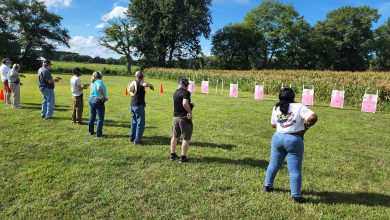Revising and Editing: The Great 5 Steps to Revise Your Writings

Revising the content is a stage of the writing procedure. When a writer completes the first draft of their writing project, then it is required to revise the written piece of paper to make it perfect. Revising is a complete process of multiple tasks. It can include editing, proofreading, removing, revising, rephrasing, or correcting. It includes all the steps required to complete the written piece of paper. For some people revising might be hard to find the mistakes or analyze their paper. But, in this article, we will share the step-by-step guide for revising your papers.
However, the professionals are already masters of revising their content. Additionally, if you take expert help from a cheap assignment writing service UK. Then it is obvious that you do not have to revise your content manually. You will get the complete services from experts and a revised paper that is helpful to save your time. Buying online writing services is also legit and works best for some people in certain situations. First, these companies deliver the complete work per your writing paper requirements. Secondly, these experts are great at doing their work and delivering it to you.
The stage of revising content is the last stage for the writers to complete their work and fix all the mistakes in the content. It becomes harder for the writer to keep making revisions during their writings. So in this way, the writer can revise the content later after the first draft. Revising the writing is an essential part of the writing process. This article will explain how you can revise your content properly and get the most out of your paper. With the help of our guidance, you will be able to get proper help for revising the work.
Here are the great 5 steps to follow for revising your writings
The major part of the writing process is the revising stage. With the help of revised content, you can highlight the big picture from your content. Making the changes will make your progress more solid and structure the entire content. Additionally, it helps to choose the right wording to define your sentences. It is also helpful to structure your sentences, rephrase them, and fix grammatical or spelling mistakes. In every way, revising is beneficial for enhancing your written piece of paper.
You can follow these steps to make your writing projects better understood by the reader. It doesn’t matter which type of content you are writing. Revising remains an important and priority task for every type of writer. Whether it is Narrative or fictional writing, revising your first draft to complete it is important. In addition, every writing project carries the same process for revising its content. You can follow these steps to make your writing projects better understood by the reader.
Step# 1: Revising the first draft at priority
Once the first draft is completed, you must prepare to revise it. The revision process can be easier for you if you follow the basic steps before starting to revise. First, you need to take a break after completing the first draft. In break time, you must refresh your mind and relax to prepare yourself for revising content. It is important to relax before that because it will boost your energy and allow you to read and understand the content properly. A proven fact is that a human cannot continuously do content writing for long hours. It is required to take a mini break and refresh the mind.
To take a break, you can take a short nap or do an outing for 5-10 minutes to feel fresh and do the revisions after break time. If you have time to complete the project and there is no urgency, you can choose another day to revise the content. Taking a break will help you to do some additional research, your mind grows and changes during the break time. With the extensive research information, you can revise it more greatly. It will also be helpful to add additional details or align the written piece of content with new information.
We also recommend discussing with another person familiar with the topic on which you have been writing content. It is also nice to conduct new research because people can be a great source of new knowledge. In addition, it can come in handy when revising the whole first draft.
Step #2: Investigate the topic again before revising the content
After the break, your revising starts by examining the topic of your writing. You must follow the funnel technique here, start with the basic areas, and then focus on the major parts. Keeping the funnel technique in your mind, you need to start by checking the general part of it. If you are writing content for an assignment, you need to keep in mind that your content should meet all the requirements you need to cover. During reexamining the topic of your whole piece of content, you need to check that the topic should stay different and reflect the topic too. It is the most critical part of writing the assignments and revising the content. You should also check that your topic remains connected with this law assignment help main point of view.
If you see, your topic is totally out of the main points. Then you need to figure out how you can change and correct it to relate to the main topic. This can be a time-consuming part, and often it can also confuse you. Then, you can consider rewriting your thesis statement. You must focus while rewriting the thesis statement that it should reflect the introduction part of the whole assignment.
Step #3: Revising the structure of the written piece
After revising the topic, you can start revising your content.The most important aspect is to revise the structure of written work. The structure contains different parts of the whole paper. The structure can include the ordering of your whole content. For example, the arrangements of paragraphs, sections, headings, points, and everything else. You need to revise the structure and align it by revising. Make appropriate sections to enhance your content in a proper way.
You can consider how the flow is going for your writings and make a proper connection for the whole structure. Sometimes, it becomes difficult for the writer to align the structure as per the outline because of the words. In this second step, you will be able to see how the flow of your entire content is going well. You can start by checking how one paragraph’s ending phrase relates to the other. This method will make the revising process easy for you. You must remember that structural changes come first before revising the entire content.
While revising the structure, you must keep your mind active and look closely at all paragraphs and their structures. If you can find a way to rearrange them better, then you should do it to make your content more logical and deliver the message. On the other hand, if reorganizing content does not have a great effect, you can try adding new information as a paragraph to support the content.
Step #4: Polishing the wordings of the whole content
Most people think that revising the content is just about revising the wording of the content. But, in actuality, revising is a complete process of different steps. Polishing the wordings by making choices is just a part of a completely revising procedure. The expert writers are aware of it and follow the process to compete for their works. But, polishing the words doesn’t mean the writer should change their entire content. Instead, you can enhance some of the words with similar meanings that give a boost and great readability to your whole content.
For most of the part, it is not even required to change the wordings. But, wherever required, remember that the idea and topic remain the same. Words need to change to strengthen the message and improve communication more efficiently.
Step #5: Proofreading the whole content
The last part of revising your complete content is to proofread the whole piece of paper. Proofreading the content means you need to check Spelling and grammar for it. Additionally, resolve all the technical problems in your complete content and make it read properly. After polishing the words, then you should consider proofreading them. Remember that this will be the last revision stage, and you must give the content one final review. Focus and pay more attention to finding the errors. If you are not confident about your paper even after the proofreading. Then, you can also take someone else’s help to proofread and check your written piece of paper. This way, you can get more help to make your content more properly aligned. After proofreading by yourself and taking the suggestions from someone else, your paper is officially final, and you are free to share.





